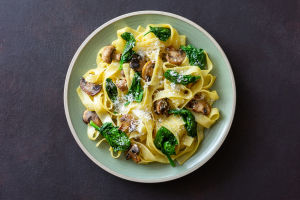Hey Lykkers! Do you know olives and olive oil have been cherished for centuries, not just as a staple in Mediterranean cuisine but also as a symbol of peace, wisdom, and prosperity.
Their rich flavor, nutritional value, and versatile uses make them a beloved ingredient around the world.
Let’s dive into the fascinating world of olives and olive oil, exploring their history, types, health benefits, and how to incorporate them into your daily life.
The History of Olives: A Journey Through Time
Olives, from the Olea europaea tree, have a history dating back 6,000 years in the Mediterranean, where they were highly valued. Ancient Greeks saw them as sacred and linked to Athena, while Romans used olives and olive oil for cooking, cosmetics, and rituals, sometimes even as currency. As the Roman Empire expanded, so did olive cultivation, especially in Spain, Italy, and France. Today, olives and olive oil remain global staples, popular not just in their Mediterranean homeland but also in regions like the United States and Australia, celebrated for their rich flavors and health benefits.
Types of Olives: A Flavor for Every Palate
Olives come in a variety of types, each with its own unique flavor, texture, and use. They are generally classified into two main categories: green and black.
1. Green Olives:
Green olives are harvested before they fully ripen. They have a firm texture and a slightly bitter, tangy taste. Popular varieties include Castelvetrano from Italy and Picholine from France, both of which are often enjoyed as snacks or appetizers.
2. Black Olives:
Black olives are fully ripened on the tree or cured to achieve their dark color. They have a softer texture and a milder, sometimes sweeter taste compared to green olives. Kalamata olives from Greece and Niçoise olives from France are among the most well-known black varieties.
3. Stuffed and Marinated Olives:
For those seeking something extra, olives can be stuffed with ingredients like garlic, almonds, or cheese, or marinated with herbs and spices. These gourmet olives are perfect for adding an exciting twist to salads, pasta, and charcuterie boards.
Olive Oil: Types and Grades
Olive oil is made by pressing whole olives and extracting their oil. It comes in several grades, each with distinct characteristics:
1. Extra Virgin Olive Oil (EVOO):
This is the highest quality olive oil, made from the first cold press of olives without the use of heat or chemicals. It has a robust flavor, low acidity, and a plethora of health benefits, making it perfect for dressings, dips, and drizzling over dishes.
2. Virgin Olive Oil:
Virgin olive oil is also produced from the first pressing but may have slightly higher acidity and a less intense flavor than EVOO. It is still suitable for cooking and offers similar health benefits.
3. Pure and Light Olive Oil:
Pure and light olive oils are refined, which means they have undergone processing to remove impurities. These oils have a milder flavor and higher smoke point, making them suitable for frying and baking.
Olive Types: What's the Best One for You?
Video By Gundry MD
Health Benefits of Olives and Olive Oil
Olives and olive oil are celebrated for their incredible health benefits, largely due to their high content of healthy fats, antioxidants, and anti-inflammatory compounds.
1. Heart Health:
Olive oil is rich in monounsaturated fats, which are known to help reduce bad cholesterol levels (LDL) and increase good cholesterol (HDL). Regular consumption of olive oil is associated with a lower risk of heart disease.
2. Antioxidant Powerhouse:
Olives and olive oil are loaded with antioxidants, such as vitamin E and polyphenols, which protect the body from oxidative stress and reduce inflammation.
3. Weight Management:
Contrary to popular belief, including healthy fats like olive oil in your diet can aid in weight management by promoting satiety and reducing cravings.
4. Skin and Hair Care:
Olive oil has been used for centuries as a natural moisturizer for skin and hair. Its hydrating properties help in treating dry skin, improving skin elasticity, and giving hair a healthy shine.
Incorporating Olives and Olive Oil into Your Diet
There are endless ways to enjoy olives and olive oil in your daily diet. Here are some delicious and easy ideas:
1. Salads and Dressings:
Use extra virgin olive oil as a base for homemade salad dressings. Pair it with balsamic vinegar, lemon juice, or herbs for a zesty kick.
2. Mediterranean Dishes:
Add olives to Mediterranean dishes like Greek salad, pasta, and pizzas for an authentic flavor boost. You can also make tapenade, a flavorful olive spread, to enjoy with bread and crackers.
3. Roasting and Sautéing:
Use light olive oil for roasting vegetables, grilling meats, or sautéing dishes that require a higher smoke point.
4. Baking:
For a healthier twist, substitute butter with olive oil in your baking recipes, such as cakes, muffins, and bread.
Olives and olive oil are more than just pantry staples—they are a celebration of nature's flavors, health, and history. From the robust taste of extra virgin olive oil to the briny bite of a perfectly cured olive, these ingredients bring a wealth of flavor and benefits to your table. Embrace the world of olives and olive oil in your cooking, skincare, and daily life, and let them add a touch of Mediterranean magic to everything they touch.


